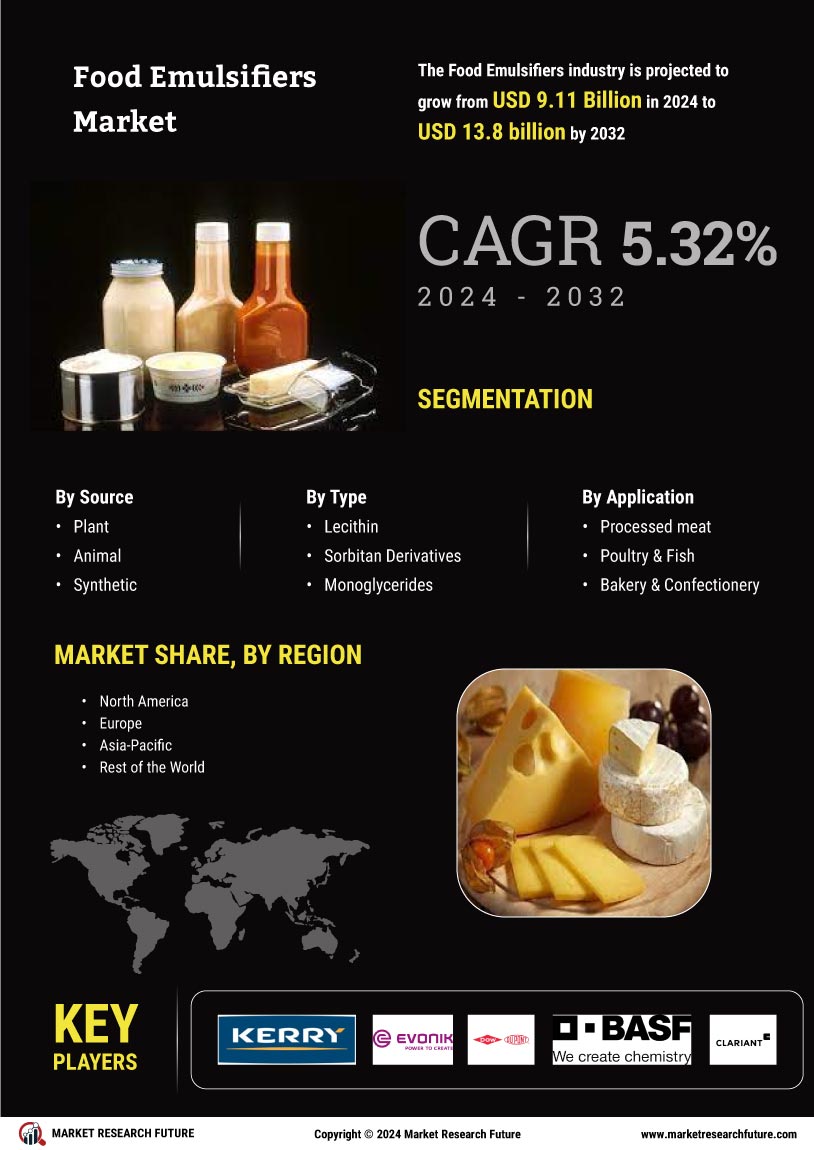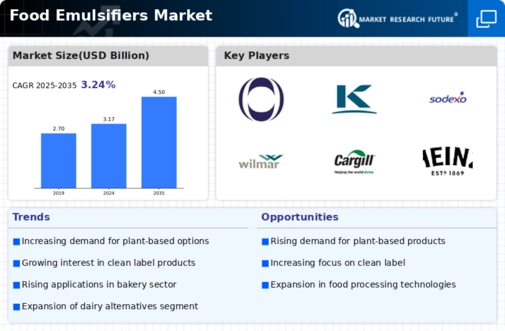Health and Wellness Trends
The Global Food Emulsifiers Market Industry is influenced by the rising health consciousness among consumers. There is a growing preference for clean label products, prompting manufacturers to seek natural emulsifiers that align with health trends. Ingredients derived from plant sources, such as lecithin, are gaining traction as they are perceived as healthier alternatives. This shift is not merely a trend but appears to be a fundamental change in consumer behavior, as evidenced by the increasing number of products marketed as free from artificial additives. The industry's adaptation to these preferences is likely to drive growth in the coming years.
Rising Demand for Processed Foods
The Global Food Emulsifiers Market Industry experiences a notable surge in demand driven by the increasing consumption of processed foods. As consumers seek convenience and longer shelf life, food manufacturers are incorporating emulsifiers to enhance texture and stability. This trend is particularly evident in regions with busy lifestyles, where ready-to-eat meals are gaining popularity. The market is projected to reach 3.17 USD Billion in 2024, reflecting a growing reliance on emulsifiers to meet consumer preferences. This shift underscores the importance of emulsifiers in maintaining product quality and consumer satisfaction in the evolving food landscape.
Regulatory Support for Food Safety
Regulatory frameworks promoting food safety and quality standards are shaping the Global Food Emulsifiers Market Industry. Governments worldwide are implementing stringent regulations to ensure the safety of food products, which in turn drives the demand for reliable emulsifiers. Compliance with these regulations often necessitates the use of approved emulsifiers that meet safety standards. This regulatory environment encourages manufacturers to invest in high-quality emulsifiers, thereby enhancing product integrity and consumer trust. As the industry navigates these regulations, it is likely to see sustained growth, aligning with the projected CAGR of 3.24% from 2025 to 2035.
Market Trends and Growth Projections
Emerging Markets and Global Expansion
The Global Food Emulsifiers Market Industry is witnessing growth in emerging markets as urbanization and economic development drive changes in dietary habits. Countries in Asia-Pacific and Latin America are experiencing increased demand for processed and convenience foods, leading to a higher consumption of emulsifiers. This trend is supported by rising disposable incomes and a growing middle class, which are likely to influence food purchasing decisions. As these markets expand, they present opportunities for emulsifier manufacturers to introduce innovative products tailored to local preferences, thereby contributing to the overall growth of the industry.
Technological Advancements in Food Processing
Technological innovations in food processing are significantly impacting the Global Food Emulsifiers Market Industry. Advanced emulsification techniques enhance the efficiency and effectiveness of emulsifiers, leading to improved product quality and consistency. For instance, high-pressure homogenization and microfluidization are being employed to create stable emulsions with better sensory attributes. These advancements not only optimize production processes but also cater to the evolving demands of consumers for high-quality food products. As the industry embraces these technologies, it is expected to foster growth and innovation, contributing to the projected market value of 4.5 USD Billion by 2035.




















